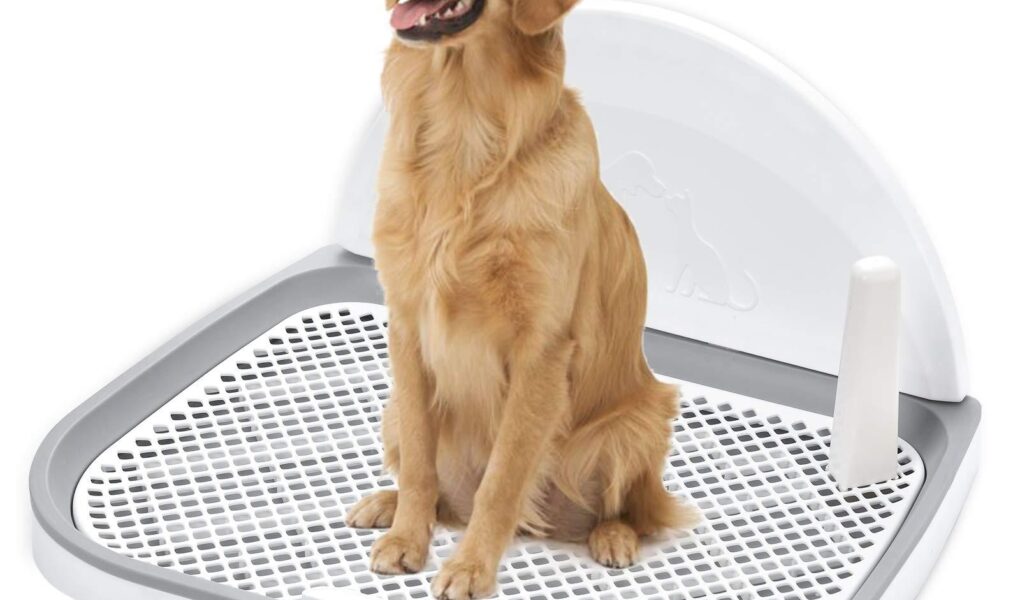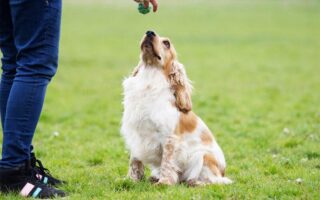Welcome to the World of Dog Toilet Training: A Journey of Patience and Understanding
Bringing a new furry friend into your home is an exhilarating experience filled with wagging tails and joyful barks. However, alongside the cuddles and playful antics comes the responsibility of training, particularly in the delicate arena of toilet habits. Dog toilet training can often feel daunting for new pet owners, a mix of countless questions and occasional mishaps. Yet, this journey is not merely about teaching your dog where to go; it’s about building a bond of trust and communication that will last a lifetime. In this article, we’ll explore effective techniques, practical tips, and the gentle approach needed to make this process as seamless and positive as possible. Whether you’re welcoming a playful puppy or working with an older dog, you’ll find insights that can transform this essential training phase into a rewarding experience for both you and your canine companion.
Table of Contents
- Understanding Your Dogs Natural Instincts for Effective Toilet Training
- Establishing a Routine: The Key to Successful Dog Toilet Training
- Choosing the Right Tools and Environment for Training Success
- Troubleshooting Common Challenges in Dog Toilet Training
- Q&A
- In Retrospect
Understanding Your Dogs Natural Instincts for Effective Toilet Training
Toilet training your dog effectively hinges on understanding and aligning with their natural instincts. Dogs are inherently cleaner than many people realize; they prefer to keep their living space free of waste. This instinct offers a unique advantage when it comes to training. By establishing a designated toilet area and encouraging your dog to use it, you can tap into their desire to maintain a clean environment. Pairing this with consistent routines and positive reinforcement can lead to successful outcomes.
Observing your dog’s body language is crucial during this training phase. Look for signs that indicate they need to go, such as:
- Sniffing around
- Circling
- Pacing
- Whining or barking
By recognizing these cues, you can promptly guide them to the appropriate spot. Moreover, consider maintaining a regular schedule for bathroom breaks, especially after meals, playtime, or upon waking. This will help instill a routine that meets both your expectations and your dog’s instinctual needs.
Establishing a Routine: The Key to Successful Dog Toilet Training
Creating a consistent schedule is vital for successful dog toilet training. By establishing set times for feeding, walks, and bathroom breaks, you can help your furry friend understand when and where they should do their business. Praise and rewards should be given generously during these designated times, reinforcing positive behavior. Familiarize your dog with their cues by observing their patterns. When you notice signs that they need to go out, such as circling or whining, it’s crucial to act promptly. This not only helps them learn the routine but also strengthens the bond between you two.
Don’t forget that patience plays a critical role in this process. Each dog learns at their own pace, so it’s essential to remain calm and avoid punishment if accidents occur. Instead, focus on redirecting their behavior. Consider creating a simple chart to track your dog’s bathroom habits, which can provide insights into their routine. This way, you can identify the best times for bathroom breaks and adjust your schedule accordingly. Here’s a straightforward example of how to log their activity:
| Time | Activity | Notes |
|---|---|---|
| 8:00 AM | Feeding | Normal appetite |
| 8:30 AM | Bathroom break | Successful |
| 12:00 PM | Bathroom break | Accident inside |
| 5:00 PM | Feeding | Excited behavior |
| 5:30 PM | Bathroom break | Successful |
Choosing the Right Tools and Environment for Training Success
Crafting a successful training environment for your dog involves selecting tools that will enhance the process while keeping both you and your furry companion comfortable. Consider these essential tools for effective toilet training:
- Degree of Comfort: Opt for a dog-friendly training pad that feels soft and secure.
- Visual Aids: Use markers or a designated spot outdoors to signal where your dog should relieve themselves.
- Timing Devices: Leverage smart technology, like apps or timers, to remind you when it’s time for bathroom breaks.
Creating an inviting and stress-free environment is equally vital. Establish a consistent routine that aligns with your dog’s natural inclinations. A well-structured schedule can look like this:
| Time of Day | Activity |
|---|---|
| First Thing in the Morning | Outdoor Relief Break |
| After Meals | Walk & Toilet Time |
| Before Bed | Final Outdoor Time |
Coupling the right tools with a consistent routine fosters a supportive atmosphere conducive to learning. Adapting your space and resources to suit your dog’s needs should be a top priority, enabling a smoother training journey for both of you.
Troubleshooting Common Challenges in Dog Toilet Training
Toilet training your dog can sometimes feel like an uphill battle, but understanding common roadblocks can make the process easier. One of the first challenges many owners face is inconsistency in their dog’s bathroom habits. Dogs thrive on routine; therefore, it’s essential to establish regular feeding and bathroom schedules. Ensure that you take your dog out first thing in the morning, after meals, and just before bedtime. If your dog seems uncertain about where to go, try to observe signs such as circling or sniffing which indicate they need to relieve themselves, and be ready to guide them outside promptly.
An additional hurdle can be accidents inside the house. It’s crucial to respond to these mishaps appropriately. Rather than punishing your pet, which can cause confusion and anxiety, focus on positive reinforcement strategies. Praise your dog or reward them with treats immediately after they go outside in the correct spot. Creating a conducive bathroom environment can also help; choose a designated area in the yard and lead your dog there consistently. Consider making a simple chore chart to track your dog’s progress and reinforce good behavior:
| Day | Bathroom Time | Accidents Inside | Notes |
|---|---|---|---|
| Monday | 4 times | 1 | Needs more praise |
| Tuesday | 5 times | 0 | Doing well! |
| Wednesday | 4 times | 2 | Revisit feeding schedule |
Q&A
Q&A: Dog Toilet Training
Q: What is dog toilet training?
A: Dog toilet training is the process of teaching your furry friend where it is appropriate to relieve themselves. The goal is to instill good habits, making it easy for both you and your dog to manage bathroom needs efficiently.
Q: When should I start toilet training my puppy?
A: The ideal time to begin toilet training is as soon as you bring your new puppy home, usually around 8 weeks old. Puppies have small bladders and need to go frequently, so starting early sets a solid foundation for their bathroom habits.
Q: What methods are most effective for toilet training?
A: There are several effective methods, including:
- Crate Training: This involves confining your dog to a crate when you cannot supervise them, as dogs instinctively avoid soiling their sleeping area.
- Scheduled Breaks: Taking your dog outside at regular intervals can help them learn to associate the outdoors with bathroom time.
- Positive Reinforcement: Rewarding your dog with treats or praise immediately after they go outside encourages them to repeat the behavior.
Q: How do I recognize when my dog needs to go outside?
A: Signs that your dog may need to relieve themselves include whining, pacing, sniffing around the house, circling, or standing by the door. Understanding your dog’s body language is key to successful training.
Q: What should I do if my dog has accidents indoors?
A: Accidents are a normal part of the training process. Remain calm and avoid punishment. Instead, clean up thoroughly to eliminate odors that could encourage repeat accidents in the same spot. Redirect your dog outside immediately afterward to reinforce the desired behavior.
Q: How long does it typically take to toilet train a dog?
A: The timeline for toilet training can vary widely based on the dog’s age, breed, and previous experiences. Generally, puppies may take several weeks to a few months to be fully trained, while adult dogs can adapt more quickly if given consistent care and training.
Q: What if my dog does not respond to training?
A: If your dog seems unresponsive, evaluate your training methods and ensure you are consistent. Additionally, consider consulting a veterinarian to rule out any medical issues or reach out to a professional dog trainer for tailored strategies.
Q: Are there any products that can help with dog toilet training?
A: Yes! There are various aids available, such as pee pads for indoor training, sprays that attract dogs to specific areas, and outdoor grassy patches for apartments. Make sure to choose products that suit your training approach and your living situation.
Q: Can older dogs be toilet trained?
A: Absolutely! While older dogs may take a little longer to adapt, with patience and consistency, they can learn new habits just like puppies. It might require different strategies, such as more frequent breaks or a focus on retraining existing habits.
Q: What are the key takeaways for successful dog toilet training?
A: The keys to successful toilet training include:
- Consistency: Stick to a routine to help your dog understand when and where to go.
- Patience: Accidents will happen; maintain a positive attitude.
- Outdoor Cues: Teach your dog a cue word or signal to indicate it’s time for bathroom breaks.
- Observing Behavior: Pay attention to your dog’s needs and signals.
By following these guiding principles and remaining committed to the training process, you and your dog will enjoy many happy, accident-free days ahead!
In Retrospect
As we conclude our exploration of dog toilet training, it’s clear that patience, consistency, and positive reinforcement are the key ingredients to success. Every dog is unique, and understanding your furry friend’s individual quirks and needs can make the training process not only effective but also enjoyable. Remember, the journey to a well-trained pup is not just about teaching them where to go; it’s about strengthening the bond between you and your canine companion. Celebrate the small victories along the way, and don’t hesitate to seek guidance if needed. With time and dedication, your dog will not only master their new skills but will also thrive as a happy, confident member of your family. Happy training!



